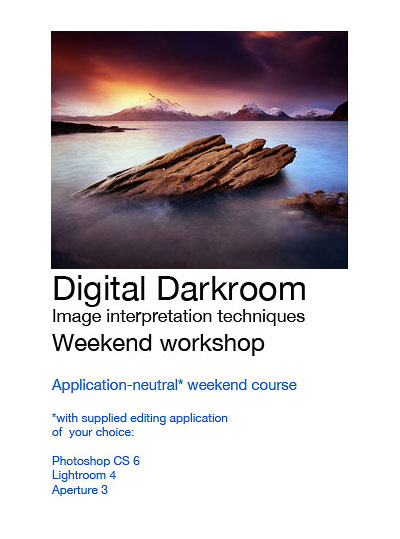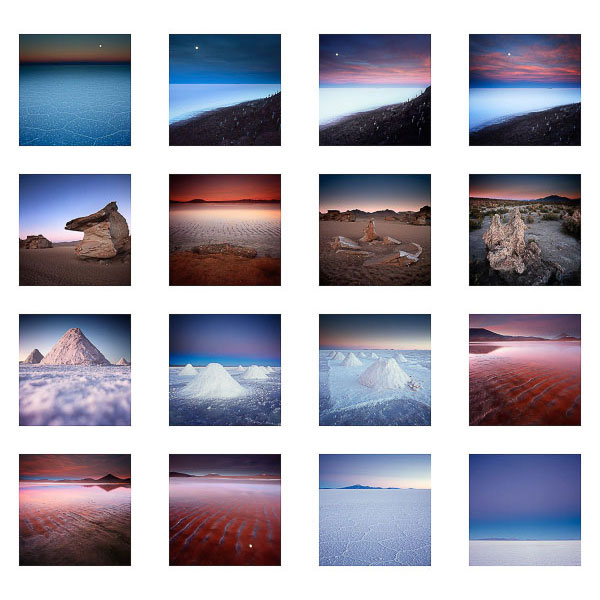A few weeks back, I bought £1,000 worth of Fuji Velvia RVP 50 film. My reasons for the purchase were not only due to the price increase that has just been announced for all of Fuji's films, but more importantly, to know that my workflow is not interrupted over the next few years.

Before I get on to the main topic of this post, I'd like to let you in on a little secret: I'm not a prolific shooter. It has taken me about three years to get through 200 rolls of film.
Anyway, back to the main point of this post: Workflow.
Workflow is important.
My own workflow has been developed over a 20 year period, and I'm fully aware that buying anything new, changing software, doing something different to my workflow, can and will influence how my final images look. I have something good going on with my current workflow, that I'm unwilling to change it, and that of course means, not changing film stock.

And this is the core of this posting today: I think we should take time to reflect and consider any new acquisitions or changes that we take on board with our existing workflow. This I feel, should start with the kind of film / sensor / lenses - right through to the screen calibrator, film scanner / editing software that we choose. Small changes can have massive impact to how the final results can turn out. Change too many things in one go, and it can lead to creative frustration (as well as long learning curves ), when all that really matters is being free to create new work. After all, this is what we are here for. So the most fundamental thing for us, is to have a workflow that enables the creation of new work, rather than inhibiting it. I can't think of a more effective way of stifling my creativity than introducing something new into the equation with little thought or knowledge as to how it may change things for me.
So I would argue; if you are getting results that you are very happy with, and you have confidence that it's as good as it can get for you, then don't be swayed to introduce something new without much consideration as to what it might do to the look and feel of your existing style. I'm not advocating that you should stand still and never change, but instead, consider the impact of any alteration to your workflow, during the introduction, and also for some time to come.
I'm very happy with my workflow. It has become transparent (invisible) to me now. I seldom have to think about anything to do with the tools I use, because I know them so well. I may not have much new to learn from using the same tools, but I still have a lot of growing to do. There's a subtle but very big difference in that. If you know your tools well, you can continue to grow and evolve with your own style of work, because you're working in an environment that you feel comfortable and safe in.
I have two particular examples in mind that I would like to tell you about. Firstly, I found that my film scanner software is no longer supported and has problems running on my computer. After some battles, I decided I needed to change software. Well, it was perhaps a good year or more before I felt I was getting scans that matched what I had come to expect from my old software. I had to go through a long learning curve to get back to where I was a few years before. Some things of course are inevitable. Software becomes end of life, operating systems move on and drivers for hardware no longer work. I despise the term 'upgrade', as it often means 'headache' when all you really want to do, is get on and work with the tools you know so well, because they don't inhibit what you do. They are simply an interface between you and your vision. I was worried for a long while as to whether I'd reach the look and feel I was used to, from using the new software. I'm lucky that it was really just down to learning the nuances of the software, but some things aren't as simple as that. They can radically change your style and there's no going back.
About 2 years ago I bought a Hasselblad 500CM camera from a dear friend. I knew at the time that:
a) It would take at least a year or so to get used to it. This included being familiar with the actual mechanics, but also, getting used to composing in square.
b) By using a new system, my style may change, for the better or for the worse. I really like shooting 6x7 or 4x5, so I wasn't sure if 6x6 was a way forward for me, or a dead end. I was also worried that I might not be able to go back to rectangles and if that happened - my older style would have vanished.
I had an awareness that by reaching out and trying something new, something that I may cherish about my current style may be lost in the process. Just having that awareness is important.
I'm happy to report that after a few years of using the Hasselblad, I now see it as an extension to what I do. I've found I can move between the Mamiya 7's 6x7 aspect ratio and the hasselblad's 6x6 aspect ratio when I feel I wish to. But It's taken a few years to get to this, and I was always thinking about the consequences of my choices when I did decide to give it a go.
Yep, I love equipment, and I'm a bit of a gear head at heart, but I also know that the final work is what's most important. I also recognise that by changing, or introducing something, or too many things in one go, what I may like about my current work may be lost. But it also may be enhanced in some way I never imagined. Change is good, but without time to master new things, and time to reflect as to how it is impacting your existing style, it's an unnavigable landscape we're working in. And for my own creativity's sake, I'd much rather be somewhere where the terrain is familiar, and isn't going to lead to any creative frustrations. Think long and hard before changing your workflow.
 For a while now, I've been wishing to teach photographers more about how to 'interpret' their images during the post processing stage of their image creation. Like Ansel Adams, I do not believe that the creation of an image stops at the moment the shutter was fired.
Learning to 'see' whilst out making images shouldn't just stop at the point of capture. Learning to 'see' is an extremely valuable asset in assessing images for post editing. What do we do with our work, how we manipulate it, should come from a strong sense of vision. We should be able to see themes, patterns, relationships within our images and know that these are the essential building blocks of our editing sessions. To do that, we must understand what is going on in our images so we can bring about our message.
For a while now, I've been wishing to teach photographers more about how to 'interpret' their images during the post processing stage of their image creation. Like Ansel Adams, I do not believe that the creation of an image stops at the moment the shutter was fired.
Learning to 'see' whilst out making images shouldn't just stop at the point of capture. Learning to 'see' is an extremely valuable asset in assessing images for post editing. What do we do with our work, how we manipulate it, should come from a strong sense of vision. We should be able to see themes, patterns, relationships within our images and know that these are the essential building blocks of our editing sessions. To do that, we must understand what is going on in our images so we can bring about our message.





